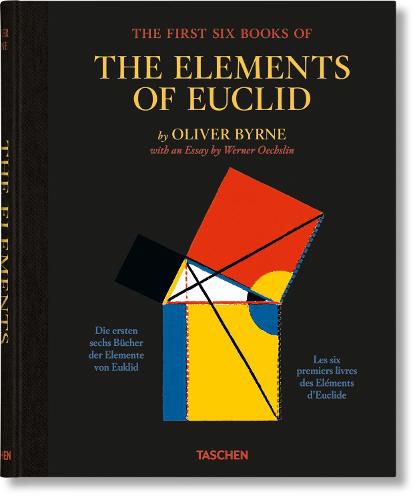Readings Newsletter
Become a Readings Member to make your shopping experience even easier.
Sign in or sign up for free!
You’re not far away from qualifying for FREE standard shipping within Australia
You’ve qualified for FREE standard shipping within Australia
The cart is loading…






Nearly a century before Mondrian made geometrical red, yellow, and blue lines famous, 19th-century mathematician Oliver Byrne employed the color scheme for his 1847 edition of Euclid’s mathematical and geometric treatise Elements. Byrne’s idea was to use color to make learning easier and diffuse permanent knowledge. The result has been described as one of the oddest and most beautiful books of the 19th century.
The facsimile of Byrne’s vivid publication is now available in a beautiful new edition. A masterwork of art and science, it is as beautiful in the boldness of its red, yellow, and blue figures and diagrams as it is in the mathematical precision of its theories. In the simplicity of forms and colors, the pages anticipate the vigor of De Stijl and Bauhaus design. In making complex information at once accessible and aesthetically engaging, this work is a forerunner to the information graphics that today define much of our data consumption.
$9.00 standard shipping within Australia
FREE standard shipping within Australia for orders over $100.00
Express & International shipping calculated at checkout
Nearly a century before Mondrian made geometrical red, yellow, and blue lines famous, 19th-century mathematician Oliver Byrne employed the color scheme for his 1847 edition of Euclid’s mathematical and geometric treatise Elements. Byrne’s idea was to use color to make learning easier and diffuse permanent knowledge. The result has been described as one of the oddest and most beautiful books of the 19th century.
The facsimile of Byrne’s vivid publication is now available in a beautiful new edition. A masterwork of art and science, it is as beautiful in the boldness of its red, yellow, and blue figures and diagrams as it is in the mathematical precision of its theories. In the simplicity of forms and colors, the pages anticipate the vigor of De Stijl and Bauhaus design. In making complex information at once accessible and aesthetically engaging, this work is a forerunner to the information graphics that today define much of our data consumption.